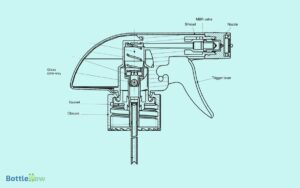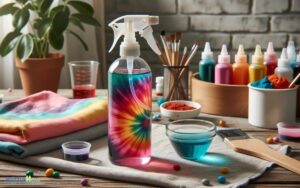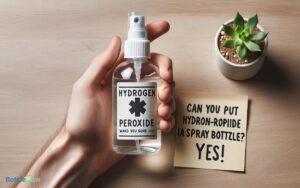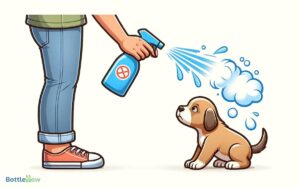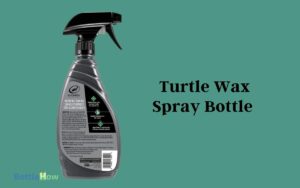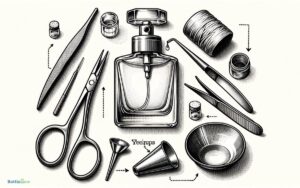How to Refill Lysol Spray Bottle
To refill your Lysol spray bottle, first make sure it’s fully empty. Remove the nozzle and wash the bottle and nozzle thoroughly with warm water, drying both well. Gather your materials: funnel, EPA-approved disinfectant, gloves, and perhaps essential oils for added scent. Follow the manufacturer’s guidelines carefully to mix your solution, guaranteeing the correct proportions. Using the funnel, pour your mixture into the bottle slowly to avoid spills. Reattach the nozzle securely, making sure it clicks into place. Test the spray mechanism to confirm it works effectively. With these steps, you’ll keep your space spotless and discover more nuances in maintaining peak functionality.
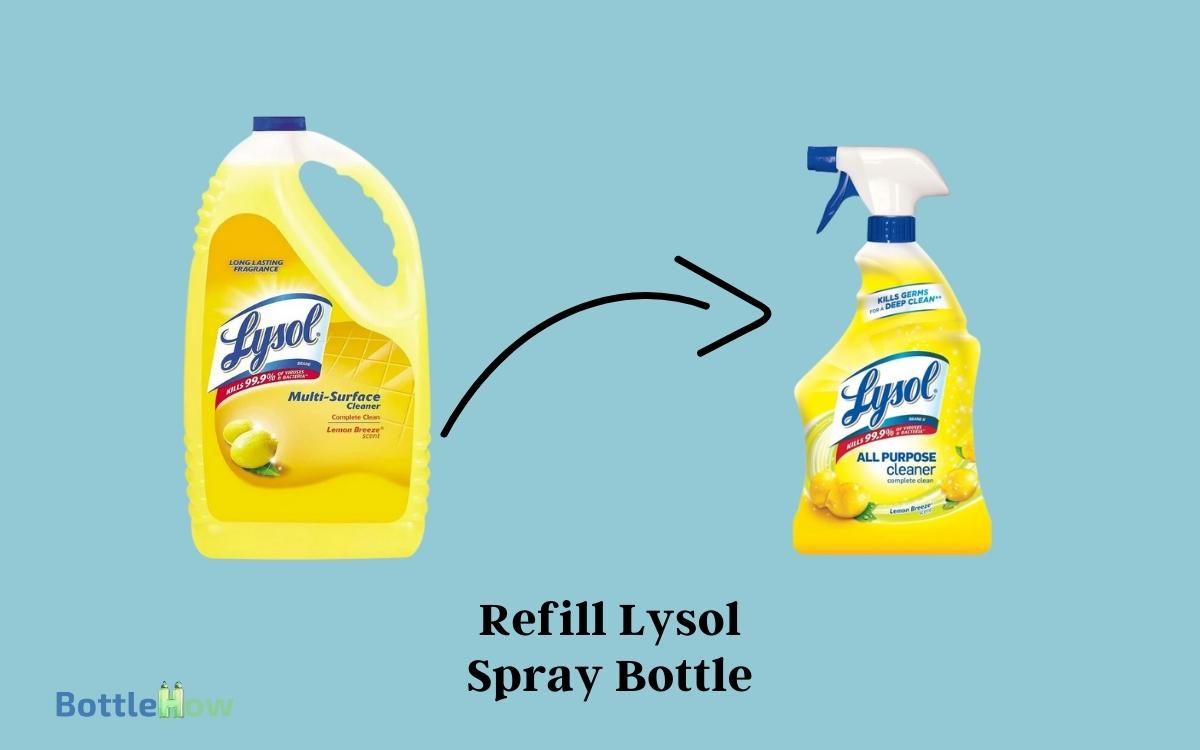
Key Takeaways
Understand Lysol Spray Bottle
The Lysol Spray Bottle is a high-quality cleaning tool designed for dispensing Lysol disinfecting and cleaning solutions. Known for its effectiveness in killing germs and bacteria, Lysol products are trusted for maintaining hygiene in homes and commercial spaces.
The spray bottle features a durable construction with an ergonomic handle, providing a comfortable and secure grip for ease of use.
It comes with an adjustable nozzle, allowing users to switch between a fine mist for broad surface coverage and a targeted stream for spot cleaning.
The clear labeling and child-resistant cap ensure safe and proper usage. Ideal for disinfecting surfaces, eliminating odors, and keeping environments clean, the Lysol Spray Bottle is a dependable choice for effective cleaning and disinfection.
Gather Necessary Supplies
Before you start refilling your Lysol spray bottle, make sure you have all necessary supplies on hand. You’ll need a funnel, important protective gloves, and a clean, spacious workspace. These items aren’t just important; they’re essential to ensure safety and efficiency in your task.
The funnel will help you pour the solution without spills, maintaining cleanliness and preventing waste. Protective gloves are vital to avoid direct contact with chemicals, protecting your skin from potential irritation or harm.
Lastly, make sure your workspace is well-ventilated and free from clutter. This setup not only safeguards your health but also enhances your ability to perform this service effectively and responsibly. Remember, precision and caution are your best tools in this process.
Empty and Clean the Bottle
First, make sure the Lysol spray bottle is completely empty before you begin the cleaning process. Carefully unscrew the nozzle and set it aside.
Rinse the bottle thoroughly with warm water to remove any remaining product. It’s important to avoid contamination with different solutions, so make certain every trace is washed out.
Here’s a quick table you can refer to for ensuring a proper clean:
| Step | Action | Purpose |
|---|---|---|
| 1. Empty | Remove all contents | Prevent mixing solutions |
| 2. Rinse | Use warm water | Remove residues |
| 3. Dry | Air dry or use a towel | Prepare for next solution |
Be meticulous in drying the bottle to prevent dilution of the new contents. This way, you’re ensuring the effectiveness and safety of your refilling process.
Prepare the Disinfectant Solution
To guarantee your disinfectant is effective, you’ll need to select the right ingredients.
It’s essential that you mix the solution correctly to maintain its integrity and effectiveness.
Be sure to follow specific guidelines for proportions to avoid compromising the disinfectant’s ability to kill germs.
Select Proper Ingredients
Selecting the right ingredients is vital for creating an effective disinfectant solution. You’ll need to choose components that not only clean but also sanitize and disinfect surfaces effectively. It’s important to use a high-quality, EPA-approved disinfectant as the base.
Look for ingredients like isopropyl alcohol or ethanol, which are known for their antimicrobial properties. You should also consider adding a small amount of a surfactant, such as dish soap, to help the solution cling to surfaces for a more thorough clean.
Moreover, if you’re aiming for a solution that leaves a fresh scent, adding essential oils like lavender or tea tree can provide both aromatic and additional antibacterial benefits.
Always confirm the purity and compatibility of each ingredient to avoid chemical reactions that could diminish the solution’s effectiveness.
Mix Solution Correctly
After selecting your ingredients, carefully measure and combine them to form your disinfectant solution. It’s essential to follow the recommended proportions to guarantee effectiveness and safety.
Typically, you’ll mix a specific amount of disinfectant concentrate with water. For instance, if you’re using bleach, the general guideline is adding 4 teaspoons of bleach per quart of water. Always use cold water, as hot water can degrade the active ingredients.
Stir the mixture gently but thoroughly to ensure the ingredients are well integrated. Don’t rush this step; a well-mixed solution ensures consistent disinfecting power throughout.
Remember, you’re preparing this solution to help maintain a safe and clean environment for yourself and others, so precision is key.
Funnel the Solution Into Bottle
Carefully position a funnel at the bottle’s opening, making sure it fits securely to prevent spills as you pour the solution. You’ll want to proceed slowly, pouring the homemade or pre-mixed disinfectant liquid into the funnel in a steady, controlled stream. Be mindful not to overfill the bottle, leaving some space to allow for easy shaking if needed. If you’re unsure about proper dilution ratios, researching how to mix Lysol concentrate can help ensure effectiveness and safety. Once filled, securely tighten the bottle’s cap and gently swirl the liquid to ensure even distribution.
It’s important to maintain a gentle pour to avoid overwhelming the funnel’s capacity, which can lead to messy overflows and waste of your cleaning solution.
Remember, keeping your workspace clean and dry not only conserves resources but also ensures safety and efficacy in your cleaning efforts.
If you notice any drips or spills, wipe them up promptly to maintain a tidy area. Your careful approach helps ensure that every drop serves its purpose in maintaining cleanliness and hygiene.
Secure the Spray Nozzle
Make sure the spray nozzle is tightly secured to prevent leaks and guarantee efficient spray function. After refilling the Lysol bottle, align the nozzle with the top of the bottle. Press down firmly until you hear a click.
This sound indicates that the nozzle is properly locked in place. It’s important that the nozzle isn’t cross-threaded a common mistake that can lead to malfunction or leakage.
| Step | Checkpoint |
|---|---|
| Alignment | Nozzle should be directly on top |
| Pressure | Press down until you hear a click |
| Cross-threading | Ensure threads align correctly |
| Security Check | Gently tug to test if it’s secure |
| Visual Inspection | Look for any gaps or misalignment |
Test the Spray Mechanism
Now, test the spray mechanism to make sure it functions correctly each time you use it.
After refilling the bottle and securely fastening the nozzle, hold the bottle upright and give it a few gentle shakes. This mixes the contents uniformly, guaranteeing consistent delivery.
Aim the nozzle at a sink or disposable towel and press the trigger. You’re checking for a steady, uninterrupted spray. If the stream sputters or doesn’t emit, check if the nozzle is fully tightened and the tube inside isn’t clogged.
It’s crucial to confirm the spray works reliably as you’re responsible for maintaining a safe, clean environment. A functional spray bottle ensures you effectively serve and protect those relying on these cleaning efforts.
Safety Tips for Refilling
When refilling your Lysol spray bottle, it’s important to wear protective gear, such as gloves and goggles, to safeguard against skin and eye irritation.
Make sure the area is well-ventilated to avoid inhaling harmful fumes that can emanate during the refilling process.
These precautions help prevent accidents and promote a safer refilling experience.
Wear Protective Gear
Before refilling your Lysol spray bottle, it’s important to don protective gloves and eyewear to safeguard against potential chemical splashes.
Handling disinfectants requires care, as direct contact with the skin or eyes can lead to irritation or more serious injuries. Choose gloves that are chemical-resistant, such as nitrile or latex, to guarantee your hands are protected effectively.
Similarly, wearing safety goggles helps prevent any accidental splashes from reaching your eyes, which is vital for your safety.
Ventilate Area Well
Make sure to ventilate the area well while refilling your Lysol spray bottle to prevent inhalation of potent fumes. Opening windows and using fans can greatly reduce your exposure to harmful chemicals.
It’s essential to create a safe environment, not just for yourself but for others around you who might be sensitive to strong odors.
If you’re assisting someone else in maintaining their home, showing them how to properly ventilate can make the process safer and more enjoyable for everyone involved.
Conclusion
Now that you’ve refilled your Lysol spray bottle, you’re part of a savvy group who knows the value of DIY: a staggering 70% of Americans prefer refilling products to reduce waste.
Always remember to label your bottle correctly and store it safely to avoid any mix-ups. By following these precise steps and exercising caution, you’re not only saving money but also contributing to a more sustainable planet.
Stay informed and stay safe in your cleaning practices!

